UPES B.Des Admissions 2026
Ranked #45 amongst Universities in India by NIRF | Ranked #1 in Academic Reputation in India by QS World University Rankings
UCEED Admit Card Date:08 Jan' 26 - 08 Jan' 26
One must pass the undergraduate Common Entrance Examinations for Design (UCEED) in order to pursue a career in design at IITs and its affiliated private colleges. This article offers a thorough analysis and preparation advice for one of the most crucial NAT (Numerical Aptitude Test) section. In addition to providing you with a comprehensive guide, this article's analysis and strategies will be based on the UCEED exam question paper for 2023–2025. The UCEED 2026 exam is scheduled for January 18, 2026, according to the Indian Institutes of Technology.
This Story also Contains

With the Analysis of UCEED previous year questions paper (2023-25) reveals a consistent pattern of the following type of questions asked in one way or other, which we will discuss one by one:
Visual Reasoning and Spatial Aptitude: This is one of the most significant components. Questions demand strong visualization and spatial ability and observational skills, pattern recognition, fundamental manipulation of 2D and 3D forms like:
Count the given information: Accurately count the element, shapes or patterns in complex visuals, including hidden figures or sequence.
E.g. Count the shapes like Triangles in the given figure (UCEED-2024)

Pattern Recognition and Completion : Recognizing the visual patterns to complete the sequence or identifying the missing elements, involving abstract shapes or transformations.
E.g. the given question below :
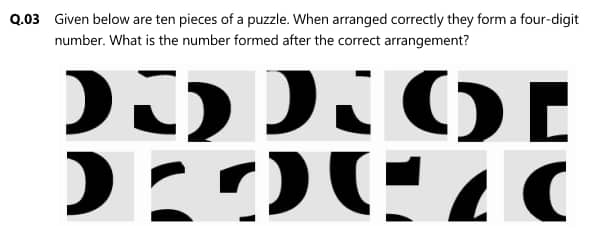
3D Visualization : Interpret the 3D objects from the given 2D representations (like orthographic and isometric views of the given object), count the surfaces, vertices or edges and visualize object assembly or transformation.
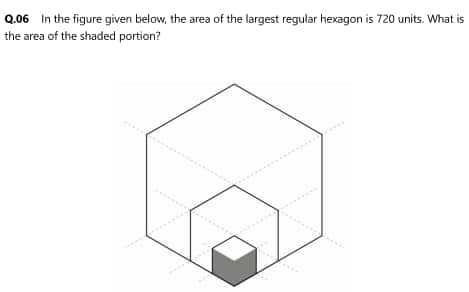
Transformation : Comprehend the geometric transformations (rotations, reflections and translations) and predict their outcomes on the shapes.
2. Arithmetic and Mensuration Based Question : Fundamental knowledge of Arithmetic and mensuration are crucial for often asked question based on practical design scenarios, as per the types discussed below:
Develop Proficiency in Basic Arithmetic : proficiency in the arithmetic fundamentals like addition, subtraction, multiplication, division and percentage, rations and averages helps to comprehend the information and think alternatively.
E.g. Percentage questions asked in UCEED 2025

E.g. Area and Volume : Calculating the areas of the 2D shapes and volumes of 3D objects,applying standard geometric formulas.
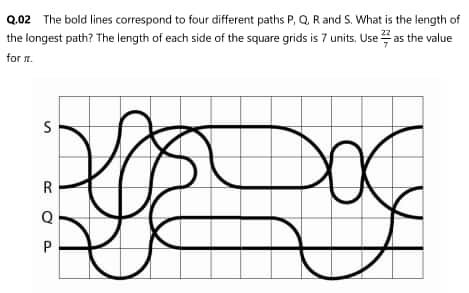
E.g Speed, Distance, Time: Problems involving relative/average speeds and calculating distances/times.
3. Logical Reasoning : This assesses deductions, sequence identification and rule-based problem solving. The logical reasoning has following crucial topics:
Number Series and Sequences: In this type of questions identifying patterns in numerical sequences.
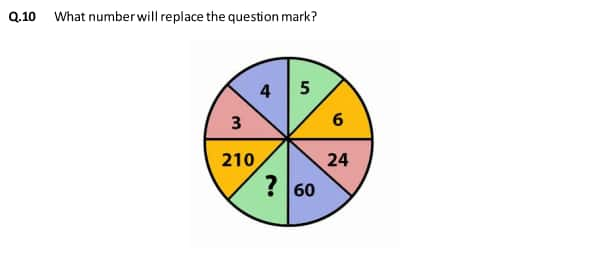
Probability: This includes the basic probability calculations.
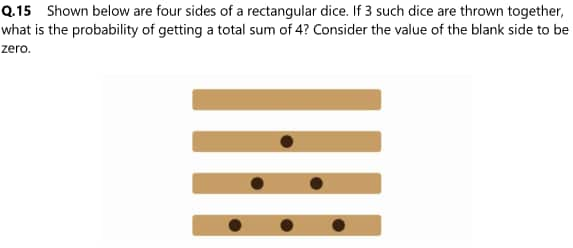
Also Read:
Given below are pointers students should keep in mind for the marking scheme for UCEED NAT questions:
No Negative Marking: Encourages attempting all the questions without fear of going wrong.
EXAMS dates- 13-14 Dec | Leading Design College | Highest CTC: ₹12 LPA | Average CTC: ₹7.5 LPA | Scholarships for Deserving Students
NAAC A+ & NBA Accredited | QS I-Gauge Gold rated University | Scholarships available for Meritorious students | Application Deadline: 28th Feb’26
Numerical Input: Answers are mostly real numbers, often requiring two decimal places, entered via a virtual keyboard.
Visual Integration: Many questions are visual based on problem-solving, bridging quantitative skills with visual interpretations.
Aptitude over Rote Learning : Questions asked in this section are inherent aptitude and problem-solving, not memorised through formulas, also sometimes it is logical and very obvious.
A tailor strategy is essential for successfully focusing on efficient and accurate problem-solving by focussing on the following aspects of NAT Sections:
Active Observation: Scrutinize details, patterns and relationships in diagrams.
Spatial Reasoning Practice: Engage in exercises (puzzles, drawing) to mentally manipulate 2D/3D shapes.
Fundamental Math Concepts: A strong understanding of arithmetic and mensuration is crucial, practise the quick calculations without a calculator.
Develop Logical Deductions: Logical reasoning with a good understanding of the Pattern Recognition, Problem-Solving Framework(Breaking down complex problem into smaller steps), probability basics(understanding the principles)
Practice for Precision: Double check with precision, paying attention to required decimal places, also practise entering the answers to get accustomed to the interface for answer input.
Time Management: The primary rule for time management is to focus on tackling the “Easy questions first and mark challenging ones for later”.
Following the foundation level beginning, the Week -01 focus on the following topics like: Arithmetic, Percentage, Rations, Speed-Distance & Time, and basic geometry. Refer to recommended books for UCEED 2026.
Practice simple visual puzzles, pattern recognition, and 2D shapes manipulation. Improve by drawing and sketching to improve the form understanding.
Deep dive in a topic-wise preparation covering the following topics:
Visual Reasoning
Arithmetic/Mensuration and Logical Reasoning
Spatial Reasoning (Practice with 3D Visualization tools, models for drawing like Rhino 3D )
Take full-length Mock-Tests focusing on the NAT Section to understand the exam environments and identify the improvement opportunities. Practice UCEED previous year papers for structural understanding. This will also help students for better time management preparation for the UCEED 2026.
Quick Revision :Review Important Formulas, concepts, and techniques as discussed above. Begin with identifying the important topics and domains from the “Previous Year-Papers” that have frequently been asked.
By following the structured approach, design aspirants can structurally develop the necessary skills and confidence to excel in the UCEED Numerical Aptitude Test(NAT) Section. With consistent practice, keen observation an aspirant could easily make it into the exam.
Students are also advised to go through these pdfs to help them in their UCEED 2026 effective preparation:
| Most Repeated Questions and Topics for UCEED | Download Here |
| UCEED 2026 Study Plan | Download Here |
| How to master Part-B Drawing Section Strategies | Download Here |
| UCEED Official Sample Question - Solution Creation | Download Here |
Prepare for UCEED with the best study materials to brace up for the entrance test. The best book for UCEED preparation is mentioned below. Preparing for the UCEED with the right set of UCEED study material is essential.
Name of the book | Author’s name |
UCEED (B.Des) Entrance Books and Test Series | AFA India |
Cracking CEED & UCEED (with UCEED Previous Years' Papers and Mock Tests) | Ashok Goel and Arjun Kamal |
Analytical Reasoning, Mental Aptitude, Verbal Aptitude (UCEED Guide) | Institute Of Creative Sciences |
Quantitative Aptitude | RS Aggarwal |
UCEED Design Environment & Social Awareness In Design Perspective Combined With Mental & Verbal Aptitude | Sreejanshilpa |
Frequently Asked Questions (FAQs)
No there is no negative marking in UCEED NAT section.
Questions range from between visual reasoning, arithmetic, spatial aptitude and logical reasoning.
Students should focus on arithmetic, percentages, ratios, and area/volume calculations.
Focus on easy questions first to gain confidence, then tackle the more difficult ones later. Keep track of time limits for each section and review your answers before submitting.
On Question asked by student community
You can access the free mock test series for the UCEED 2026 exam directly through the provided link. Taking mock tests is the single most critical step for UCEED preparation, as the exam is highly focused on aptitude, visualization, and analytical skills, rather than textbook knowledge. Consistent practice with these mock tests will help you: (1) Understand the Complex Pattern: Get familiar with the Part A (Aptitude) sections, including Numerical Answer Type (NAT) and Multiple Select Questions (MSQ). (2) Improve Speed and Time Management: UCEED is time-intensive, and mock tests help you learn to allocate time effectively between the diverse question types (Visualisation, Spatial Reasoning, Communication, etc.). (3) Practice Sketching (for Part B): While Part A is computerized, practicing the simulated Part B (Drawing/Sketching) challenges will sharpen your creative skills needed for a high score. Start practicing immediately for the UCEED 2026 exam here: https://learn.careers360.com/test-series-uceed-free-mock-test/
Hello,
Careers360 offers free UCEED Mock tests. You can access the mock test by this link : UCEED Mock Test 2026: Free Online Practice Test Series
Hope it helps !
Hello,
For admission to Ajeenkya D.Y. Patil University (ADYPU), you must score a minimum of 50% in your 12th grade for the general category. However, ADYPU conducts its own entrance exam, known as the ACET ADYPU Common Entrance Exam, which includes a studio test and a personal interview. So, you would have a chance for admission based on how well you score in the entrance exam.
Hope it helps!!!
If you’re looking for free courses for NID, NIFT, and UCEED preparation, that’s a great idea to get started without spending much. Many platforms offer free foundation and crash courses covering topics like design aptitude, logical reasoning, general awareness, and sketching. You can go through the link I’ll attach from Careers360, which provides free preparation material and courses for these exams. It will help you access mock tests, previous year papers, and video lectures to build a strong base for the entrance exams.
https://design.careers360.com/nift-nid-uceed-entrance-exam-free-crash-course
Hello Dear Candidate,
Here's the full study material for UCEED 2026: https://design.careers360.com/download/ebooks/uceed-full-study-material Thank You
Among top 100 Universities Globally in the Times Higher Education (THE) Interdisciplinary Science Rankings 2026
World-class design education with a global curricular collaboration with Parson’s School of Design
Ranked 2nd in the IIRF 2023 Design School Ranking | Approved by AICTE | Highest CTC 13 LPA
Ranked #45 amongst Universities in India by NIRF | Ranked #1 in Academic Reputation in India by QS World University Rankings
No. 1 Design & Fashion Institute by ASSOCHAM, India Today, Outlook and The Week rankings
EXAMS dates- 13-14 Dec | Leading Design College | Highest CTC: ₹12 LPA | Average CTC: ₹7.5 LPA | Scholarships for Deserving Students